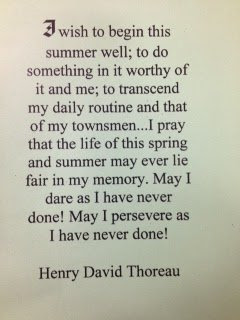What do you think or say when someone makes fun of your lunch?
AGENDA:
1. Journal
2. 20 Questions (*These are designed to go along with our reading. And, since some of you haven't found the book where I embedded it, I created a page for the purpose. Please visit the FAHRENHEIT 451 PAGE BY CLICKING HERE and bookmark it for easy reference. It will help you to read a few pages before our 1:00 meeting-- that way, we can discuss the first few questions. We're up to about #12. Please answer the questions in a post on your blog (title: 451 QUESTIONS, 20 ANSWERS)
-
“The Hearth and the Salamander” seems an odd choice for a chapter title. Why
do you suppose
Bradbury chose it? What connections did he want to create? (hint: in
mythology, the salamander is a fire lizard, said to be capable of
starting and putting out fires)
-
The lines, “It was a pleasure to burn. It was a special pleasure to see things eaten, to see things
blackened and changed” (1) tell the reader a great deal about the protagonist, Guy Montag. What
assumptions can the reader make?
-
Bradbury’s use of metaphor and animal imagery begins on page one of the novel. He writes, “With the
brass nozzle in his fists, with this great python spitting its venomous kerosene upon the world, the blood
pounded in his head...” (1). Why would he have chosen to characterize a fire hose as a “great python?”
Is the imagery positive or negative?
-
Also on the first page, we learn that Montag’s fire-helmet is inscribed with the number 451. What is the
symbolic importance of this number?
-
Explain how Clarisse McClellan is first described. What is it about her that immediately strikes Montag?
-
The names “Clarisse” and “Guy” are significant. How?
-
Clarisse questions Montag about his way of life. How does she question him, and how does he react to
her questions?
- During the first conversation between Clarisse and Montag the reader discovers several odd things about the society in which these two characters live. Describe at least three odd things we learn.
- Montag employs two similes in thinking of Clarisse. What comparisons does he make and why?
- What does Montag realize about himself after Clarisse leaves him the first time?
-
What are “Seashells” and how does Montag’s wife, Mildred/Millie, use them?
-
There is a stark difference between Bradbury’s first description of Clarisse and his first description of
Mildred. What does the reference to her face (11) signify and how does it contribute to our
understanding of both her character and the marriage between Montag and Mildred?
-
Describe the machine used on Mildred. Explain the symbolism.
-
Montag’s comment that “Nobody knows anyone” (14) is telling. What is the epiphany he has?
-
Unthinkingly, Montage finds himself drawn to the window of the McClellan household. Explain the
contrast between his house and this one. What does the contrast tell the reader about society at large?
-
Montag’s confused statement, “‘I don’t know anything anymore’” (15) signifies a pivotal moment in the
text. Explain.
-
When Mildred wakes up from her near-death experience, she does not seem to remember what
happened. Describe her mood at this point. Why has Bradbury characterized her this way? What does
Millie’s conversation with Montag reveal about her?
-
Why does Clarisse visit the psychiatrist?
- What is “the Hound” and what is its function? Why is Montag bothered by the Hound?
- Why does the woman want to stay-- and burn, and die--with her books, rather than surrender to the fireman and leave the books and her home to burn?

No comments:
Post a Comment